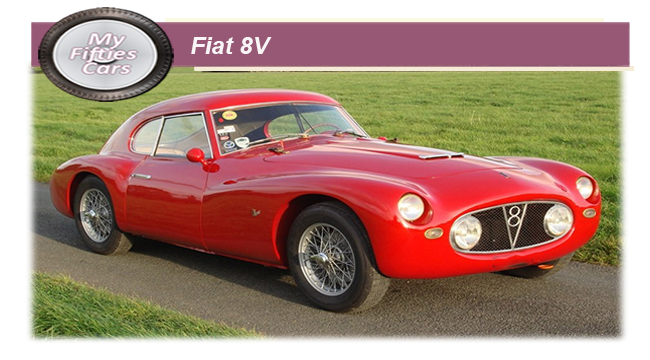 When Fiat first took the wraps off their 8V at the Geneva Motor Show in 1952, the motoring media were reportedly shocked to the core.
When Fiat first took the wraps off their 8V at the Geneva Motor Show in 1952, the motoring media were reportedly shocked to the core.
The re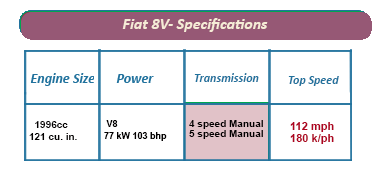 ason for their astonishment was that the 8V, a sleek looking and powerful sports coupe was so far divorced from Fiat's image, especially during the austere times of the early Fifties in Europe.
ason for their astonishment was that the 8V, a sleek looking and powerful sports coupe was so far divorced from Fiat's image, especially during the austere times of the early Fifties in Europe.
The V8 literally stood out like a sore thumb on the Fiat stand at Geneva, a jewel among the other offerings of that year, a significant departure from the utilitarian vehicles that the company was best known.
Another question that soon sprung up was " why the unusual title ?" And the answer to that was equally non-conventional.
 Once t
Once t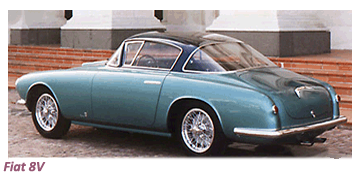 he initial surprise had subsided, Fiat were happy to explain their reasoning- and it was so simple to be almost brilliant.
he initial surprise had subsided, Fiat were happy to explain their reasoning- and it was so simple to be almost brilliant.
Developed around a 2-litre (122 cu in) V8 engine developed in-house, the Fiat 8V was reportedly a substitute for a new model in its advanced stages of development that had failed to transpire.
![]()
The solution to make something with this unwanted engine soon became apparent to the "powers that be" at Fiat- design a sports coupe to put it in!
Back in the early 1950s, when Fiat's designers were working toward creating a new sports coupe, they mistakenly believed that Ford had trademarked the term "V8" for that engine configuration.
To avoid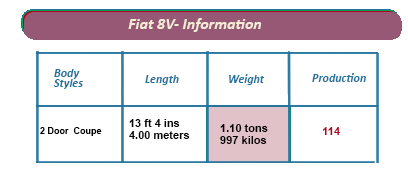 a potential lawsuit, Fiat switched the characters around and named their new baby the '8V," or Otto Vu" which the car became generally known, even outside of Italy.
a potential lawsuit, Fiat switched the characters around and named their new baby the '8V," or Otto Vu" which the car became generally known, even outside of Italy.
 Despite the 8V having a decided Pinin farina-look to it, the car was designed in-house by Fiat design boss Dante Giacosa which meant that many standard parts from other production cars were used in the project to cut costs.
Despite the 8V having a decided Pinin farina-look to it, the car was designed in-house by Fiat design boss Dante Giacosa which meant that many standard parts from other production cars were used in the project to cut costs.
The Fiat 8V was produced on a tubular steel chassis with a double-skinned body. The outer body gave it its shape while the inner one supported the vehicle frame to which is was welded.
![]()
Developed with the aim of boosting Fiat's image in the sporting arena, that engine remains to this day the only V8 Fiat has ever built.
After careful consideration, Giacosa proposed to the Fiat management the idea of developing a sports car around the engine, which could then be used as a basis for creating a sedan model.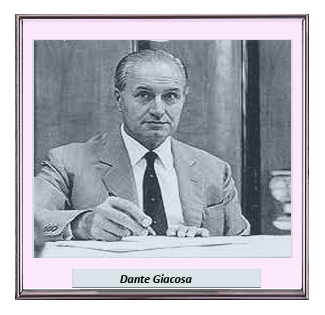 To optimise efficiency and prevent excessive workload on the development department, a strategic decision was made to allocate responsibilities between Siata and Fiat. Siata was entrusted with the development of the chassis and the installation of the mechanics, while Fiat handled construction of the engine and the body.
During its production period until 1954, a total of 114 "8 VU's" were manufactured by Fiat in collaboration with various coachbuilders.
To optimise efficiency and prevent excessive workload on the development department, a strategic decision was made to allocate responsibilities between Siata and Fiat. Siata was entrusted with the development of the chassis and the installation of the mechanics, while Fiat handled construction of the engine and the body.
During its production period until 1954, a total of 114 "8 VU's" were manufactured by Fiat in collaboration with various coachbuilders.
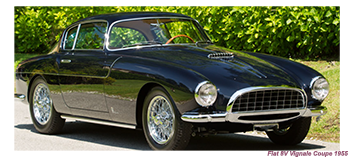 Due to its limited production numbers, it has become a sought-after classic car among collectors and enthusiasts.
The Fiat 8V remains an important piece of automotive history, showcasing Fiat's engineering prowess and its willingness to experiment with new engine configurations.
Today, the Fiat 8V is considered a prized collector's item due to its rarity, unique design, and historical significance. Restored examples can command high prices at auctions and among classic car enthusiasts.
Due to its limited production numbers, it has become a sought-after classic car among collectors and enthusiasts.
The Fiat 8V remains an important piece of automotive history, showcasing Fiat's engineering prowess and its willingness to experiment with new engine configurations.
Today, the Fiat 8V is considered a prized collector's item due to its rarity, unique design, and historical significance. Restored examples can command high prices at auctions and among classic car enthusiasts.
 One of the most notable examples of these is the Fiat 8V Carozzeria Zagato, regarded as being among the most beautiful Fiats ever produced.
One of the most notable examples of these is the Fiat 8V Carozzeria Zagato, regarded as being among the most beautiful Fiats ever produced.
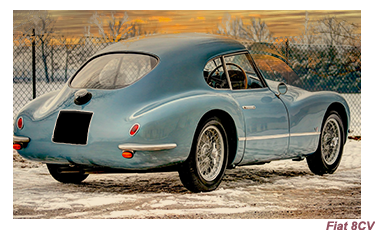 Anyone fortunate enough to have cast their eyes over the Fiat 8V Carozzeria Zagato would be confident that they were looking at a quintessential example of a Sixties sports coupe and be surprised to discover that it was produced a full decade previously.
Anyone fortunate enough to have cast their eyes over the Fiat 8V Carozzeria Zagato would be confident that they were looking at a quintessential example of a Sixties sports coupe and be surprised to discover that it was produced a full decade previously.


